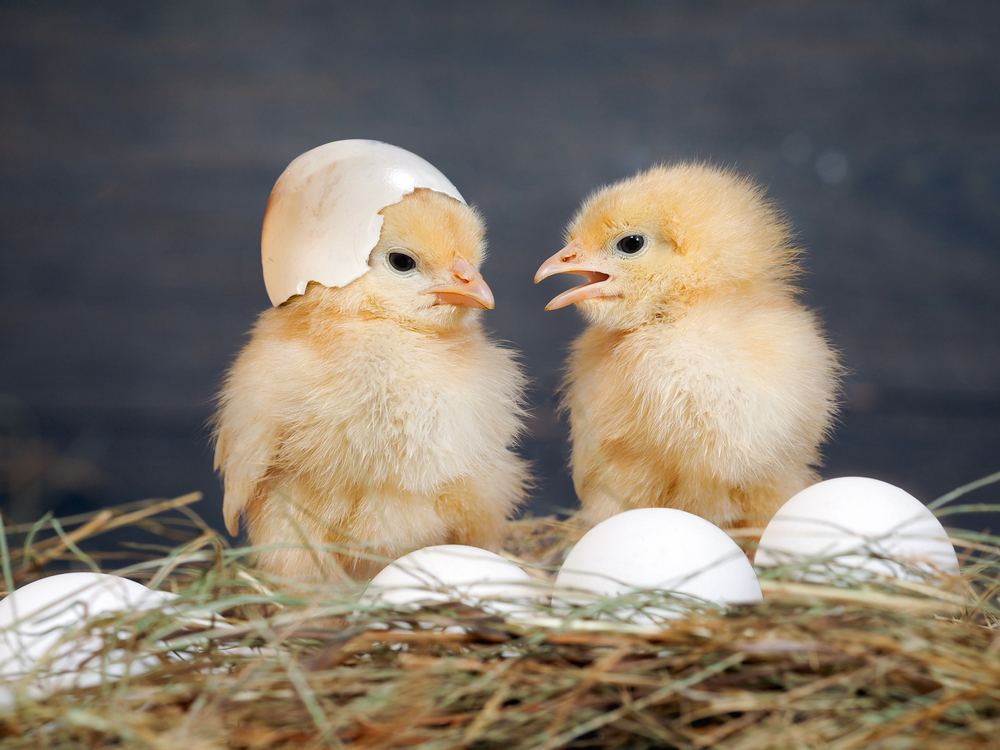In Search of God
The Chicken or the Egg: How the Perfect Design of Nature Proves Creation
Explore the astonishing complexity of the egg, and discover why such precision points to intelligent design
 (Photo: shutterstock)
(Photo: shutterstock)The question, which came first — the chicken or the egg? is not a childish riddle, but a serious scientific problem. How did life begin? How can something living emerge from nonliving matter — or how can one form of life give rise to another completely different one? This question echoes through time.
How did reptiles or birds begin laying eggs in the first place? The egg functions as a kind of external womb, a perfectly balanced system in which multiple factors must operate simultaneously for life to develop. It is all or nothing — every component must work together from the start.
If the egg were missing even one critical feature, no chick could survive to hatch, and no species that reproduces by laying eggs, such as fish, reptiles, or birds, could exist. This points to intentional design by a Creator who planned every detail to perfection.
1. A Precisely Engineered Home
The eggshell is the outer “house” in which the chick develops from a single cell. Its thickness must be exact. If it’s too thin, the egg will crack under the hen’s weight during incubation, and if it’s too thick, the chick won’t be able to break through and will die inside.
The shell must also prevent evaporation of moisture into the air — just as a human embryo couldn’t survive in the womb without amniotic fluid, the chick requires enough liquid to grow within.
Thus, the shell is perfectly suited to the life inside it. Each of its features is critical for survival. This precision is encoded in the DNA of every chicken, determining the exact thickness of its eggshell. Any deviation from this genetic code would make continued existence impossible.
2. What Does the Chick Eat?
A developing embryo inside a mammal receives nourishment directly from its mother through the umbilical cord. An embryo developing outside the mother’s body — in an egg, needs another solution.
In the egg, the yolk serves as the chick’s self-contained food supply. The yolk is not the chick itself but the nutrient storage that sustains it — rich in fat, protein, and fluid.
This reserve contains precisely the right amount of food and water the embryo needs until it grows strong enough to hatch — not too heavy for the egg to carry, yet sufficient to sustain the chick’s full development.
Even in the very first egg, this complete system of the proper type and quantity of nutrients, had to exist from the start.
 (Photo: shutterstock)
(Photo: shutterstock)3. A Built-In “Waste Pocket”
Every living creature produces waste, and the developing chick is no exception. As it consumes the yolk and grows, it must expel waste products. How can it do so inside a sealed egg? If the waste mixed with the developing embryo, it would poison and kill it.
Every egg contains an internal “waste chamber”, a special sac that safely stores metabolic waste until the chick hatches. This too requires precise genetic programming — another line of DNA code within the chicken that forms this vital compartment.
4. How Does the Hen Know to Incubate?
If the first bird or reptile didn’t know to cover or warm its eggs, its offspring would die, and its species with them.
How does a hen know to sit on her eggs for days to keep them warm? How do reptiles know to bury their eggs in soil to protect them and maintain the right temperature?
There’s no rational reason for an animal to treat a hard, motionless object as if it were alive — or for a reptile to bury what appears to be lifeless stones in the ground. Yet every species does exactly what it must do to ensure the survival of its young.
The answer lies in instinct — preprogrammed commands written into the DNA of every creature. These are automatic behavioral codes that direct each animal how to act from birth to death.
Even the chick itself is born with these same commands — so that when it grows up, it will instinctively know how to care for its own eggs.
A Perfect System from the Start
All these mechanisms — the shell, nutrients, waste chamber, and instincts, form an interdependent system. If even one were missing in the first egg, life could not have continued.
Such a perfectly coordinated design cannot emerge gradually or by accident. It points instead to intentional creation — a complete system designed from the very beginning.

